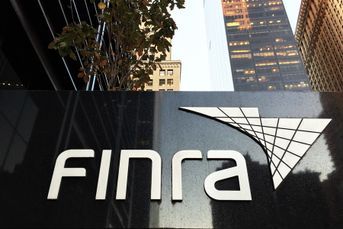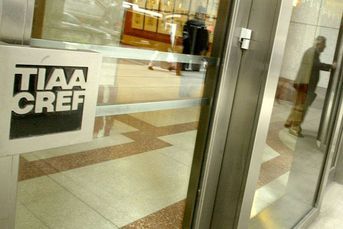Technology can help balance adviser portfolio discretion with firm controls
 1
1
A new report says giving advisers flexibility to build client portfolios while managing risk will be important for growing assets and attracting talent.
The technology most closely connected with firm growth and adviser retention isn’t digital advice or “frictionless process automation,” according to a new report by consulting firm F2 Strategy and MyVest, a digital advice vendor owned by TIAA.
The report contends technology that lets advisers build client-customized portfolios while still managing risk could be the tool that’s most important in enabling a firm to grow assets and attract top advisory talent.
While many firms would like to see advisers adopt model portfolios, advisers are demanding more discretion over client portfolios and flexibility to provide investors with personalized advice, according to F2 Strategy’s research.
[Recommended Video: What’s now (and what’s next) for adviser outsourcing]
Top advisers often cite high levels of discretion and customization as helping them win larger and more complex clients, the report says. A 2017 Cerulli Associates report also found that “advisors believe that this ability to determine asset allocations and select investment products is very important when justifying their fee.”
Discretionary portfolio management — including the traditional rep-as-PM model, centralized programs like unified managed accounts and hybrid models in between the two — have become top selling points to attract and retain advisers, the report says.
[More: Advisers can now create custom model portfolios using Betterment‘s white-label robo]
But increased adviser discretion also raises the risk of portfolio drift, performance inconsistencies, compliance issues and other problems caused by adviser behavior. Firms have to balance the flexibility advisers crave with controls, oversight and tracking to prevent bad behavior that could be damaging.
This is where technology plays a role.
“Technology increasingly facilitates controllable customization with proper risk assessment, portfolio construction and rebalancing functions,” the report states. “When implemented correctly, these capabilities manage the expectations of clients and their advisors, plus the compliance oversight needs of the home office.”
Specifically, advisers need technology to assess client preferences and risk tolerance to tailor investment decisions, as well as a menu of models and securities they can use as preapproved building blocks for constructing a portfolio. Automated trading, monitoring and rebalancing can put portfolios on cruise control so advisers only need to step in to handle exceptional activity.
But many automated portfolio management tools remain too expensive for many small advisory firms. Even firms that can afford the technology will still experience frustration, slow asset growth and even adviser attrition if the tool is not implemented correctly.
“In our experience, few wealth firms take the time to do sufficient due diligence to make great decisions, and there can be a big difference between expected and realized ROI,” the report says.
Other common complaints F2 Strategy hears from advisers include an inability to manage multiple accounts and account types, limited configuration inhibiting proper oversight, and frustration with technology vendors being too focused on acquiring competitors or finding new clients than in building the features advisers are asking for.
“This dissatisfaction is starting to boil over, and we’ve seen several large team departures due to the issues around technology and its negative spillover to client experience,” F2 said, citing its work with an unnamed wirehouse.
To get it right, the report makes four recommendations. First, firms should identify external partners to work with and make a business case for technology that starts with addressing the pain points of the firm’s most valuable adviser teams.
Instead of transitioning to a new platform all at once, firms should use a transitional period to demonstrate the benefits of new technology while keeping the old platform available.
Finally, the report recommends selecting internal champions who can act as “ambassadors” for the technology to encourage adoption and develop internal support.
“In the long term, the boundaries between advisor-driven and centrally managed programs will blur, and all programs will exist on a spectrum with varying levels of configurable advisor discretion,” the report concludes. “How that balance is struck will depend on the firm’s strategy, driven in large part by the importance of centralized standards versus the importance of advisor retention. Choosing the supportive, configurable technology will play a critical role in achieving this balance.”
Learn more about reprints and licensing for this article.








